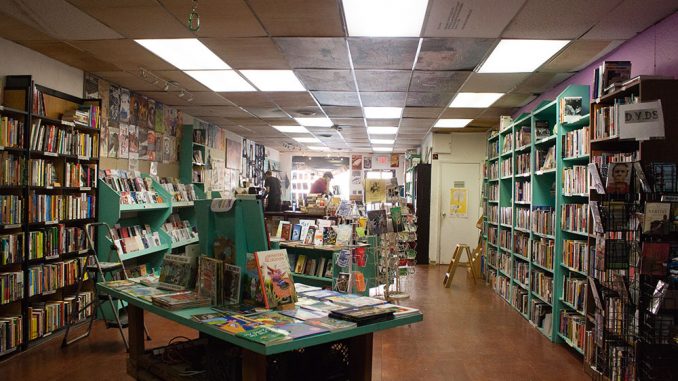
The volunteers at Wooden Shoe Books and Records stare from behind the counter as a middle-aged bald man in neat clothes and a teenager in a torn Guns N’ Roses T-shirt browse through Steinbeck, Tolstoy and writings from the radical left.
The crowd that usually fills South Street has not arrived yet and the cold Saturday morning occupies the empty space.
“Our audience is pretty mixed because we are on South Street,” said James Generic, who serves as one of the store’s clerks, as he absentmindedly runs his hand over his thick beard. “We get people who are already radicals, but also a lot of people who are just here for the day to check it out.”
The Wooden Shoe is a collective, which Generic calls “America’s bookstore.”
It’s been around since 1976, supported by its volunteer base, selling anarchist and left-wing literature. The Wooden Shoe may be popular because of its uniqueness, or for other reasons, Generic said.
“There’s not really anyone we have to compete with because there’s not many bookstores left,” Generic said. “The only bookstores that are still around in Philadelphia are independent ones like the Wooden Shoe.”
“We’re not dying, that’s not the kind of question you ask,” Michael Fox, the owner of Joseph Fox Bookshop on Sansom Street in Center City said. “We survive because we’re good. All kinds of people come into our store – people who like good books.”
While the bookstores are confident in their sales, BookScan reported that of each book sold on the market, only 250 copies are purchased each year and only 3,000 copies throughout the book’s lifetime.
It’s e-books that are taking over the market. BookStats reported that sales of e-books rose approximately 44.2 percent last year.
Bigger retailers such as Barnes & Noble are still in business, but Borders has since closed its doors. Barnes & Noble’s mild success could be attributed to its e-book reader, the Nook.
Online and electronic books are where the student population often gets its literature rather than bookstores themselves.
“I want to say the last time I bought a book was two summers ago,” said Julie Kang, a student in the Fox School of Business.
“I don’t even remember the last time I bought a book,” said freshman engineering major Kevin Yeash. “All the books I’ve read, my family just has.”
However, the American Booksellers Association reports that though Barnes & Noble counts for about 20 percent of market sales and Amazon for 29 percent, independent bookstores do account for 10 percent and since 2009, have seen a steady incline in independent bookstore locations – moreso than the larger chains.
Despite the reports, of the 11 bookstores called, only four were willing to comment, the rest either hanging up or saying its owner wasn’t there.
“I can’t imagine why people would be hanging up,” Greg Schirn, co-owner of House of Our Own said. “I don’t see a reason why people wouldn’t talk to the press.”
House of Our Own, located at 39th and Spruce streets, has been in business for 42 years.
“We don’t really order new books anymore,” Schirn said. “We have a huge collection of old books and there’s no real point.”
While suburbanites and radicals visiting South Street are the lifeblood for Wooden Shoe, House of Our own benefits from a similar asset: its location.
“The majority of people who buy books here are students,” Schirn said.
Andrew Griffin can be reached at andrew.beard.griffin@temple.edu.



I really like what you guys are up too. Such clever work
and reporting! Keep up the superb works guys I’ve included
you guys to our blogroll.